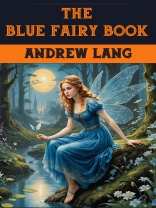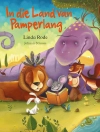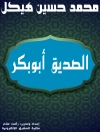Andrew Lang’s Fairy Books or Andrew Lang’s ’Coloured’ Fairy Books constitute a twelve-book series of fairy tale collections. Although Andrew Lang did not collect the stories himself from the oral tradition, the extent of his sources, who had collected them originally (with the notable exception of Madame d’Aulnoy), made them an immensely influential collection, especially as he used foreign-language sources, giving many of these tales their first appearance in English. As acknowledged in the prefaces, although Lang himself made most of the selections, his wife and other translators did a large portion of the translating and telling of the actual stories.
The Blue Fairy Book assembled a wide range of tales, with seven from the Brothers Grimm, five from Madame d’Aulnoy, three from the Arabian Nights, and four Norse stories, among other sources.
Andrew Gabriel Lang was a prolific Scots man of letters. He was a poet, novelist, and literary critic, and a contributor to anthropology. He now is best known as a collector of folk and fairy tales.
The Blue Fairy Book was published in 1889 to wide acclaim. The beautiful illustrations and magical tales captivated the minds of children and adults alike. The success of the first book allowed Lang and Leonore to carry on their research and in 1890 they published The Red Fairy Book, which drew on even more sources and had a much larger print run. Between 1889 and 1910 they published twelve collections of fairy tales, each with a different coloured binding, with a total of 437 stories collected, edited and translated.
The books are credited with reviving interest in folklore, but more importantly for Lang, they revolutionised the Victorian view of fairy tales – inspiring generations of parents to begin reading them to children once more.
THE TALES in this volume are intended for children, who will like, it is hoped, the old stories that have pleased so many generations.
The tales of Perrault are printed from the old English version of the eighteenth century.
The stories from the Cabinet des Fees and from Madame d’Aulnoy are translated, or rather adapted, by Miss Minnie Wright, who has also, by M. Henri Carnoy’s kind permission, rendered ’The Bronze Ring’ from his Traditions Populaires de l’Asie Mineure (Maisonneuve, Paris, 1889).
The stories from Grimm are translated by Miss May Sellar; another from the German by Miss Sylvia Hunt; the Norse tales are a version by Mrs. Alfred Hunt; ’The Terrible Head’ is adapted from Apollodorus, Simonides, and Pindar by the Editor; Miss Violet Hunt condensed ’Aladdin’; Miss May Kendall did the same for Gulliver’s Travels; ’The Fairy Paribanou’ is abridged from the old English translation of Galland.
Messrs. Chambers have kindly allowed us to reprint ’The Red Etin’ and ’The Black Bull of Norroway’ from Mr. Robert Chambers’ Popular Traditions of Scotland.
’Dick Whittington’ is from the chap book edited by Mr. Gomme and Mr. Wheatley for the Villon Society; ’Jack the Giant-Killer’ is from a chap book, but a good version of this old favourite is hard to procure.












